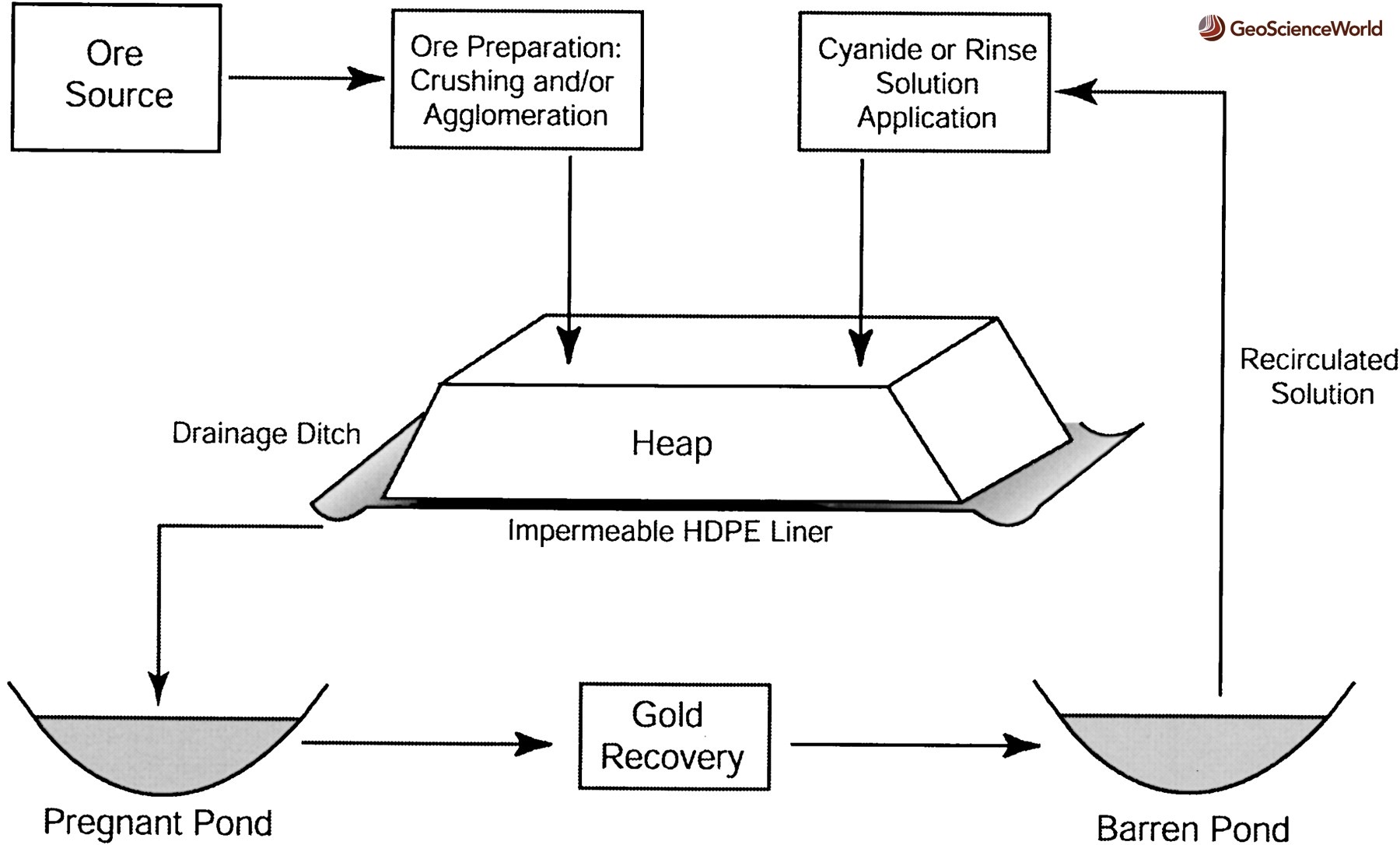In the early days of mining, men would extract gold by placer mining, or by panning. Eventually the larger pieces were played out, and a new process was needed to collect the tiny fragments that were embedded into hard rock.
One process was the stamp mill. Large, heavy stamps were used to crush large rock into fine rock, then that fine rock could be sifted much like miners did it by hand when panning. However, not all of the gold and silver was extracted this way either. Once the fine rock went through this method, the gold and silver was usually so small, it wasn’t cost effective to try to extract it. The remainder was dumped into large piles (these piles were called ‘tailings’) and left as a by-product of mining.
Then the “cyanide leaching process” was developed. Mixing the tailings with a cyanide solution, or simply spraying the tailings with a cyanide solution, would cause a chemical reaction to take place. When gold and silver comes in contact with cyanide, it liquefies. Now the gold-silver-cyanide solution can be drained off and processed again – but this time without the fine rock.
Another chemical reaction is put to work to separate the cyanide solution from the liquid gold and silver. Zinc is then mixed with this solution, which causes the gold and silver to return to a solid form.
Now there is a solid of gold, silver, and zinc. Yet another chemical reaction is used to remove the zinc. Sulphuric acid dissolves the zinc and leaves just the gold-silver mixture.
This gold-silver solid can then be melted down into bar for later processing to separate the gold from the silver.

